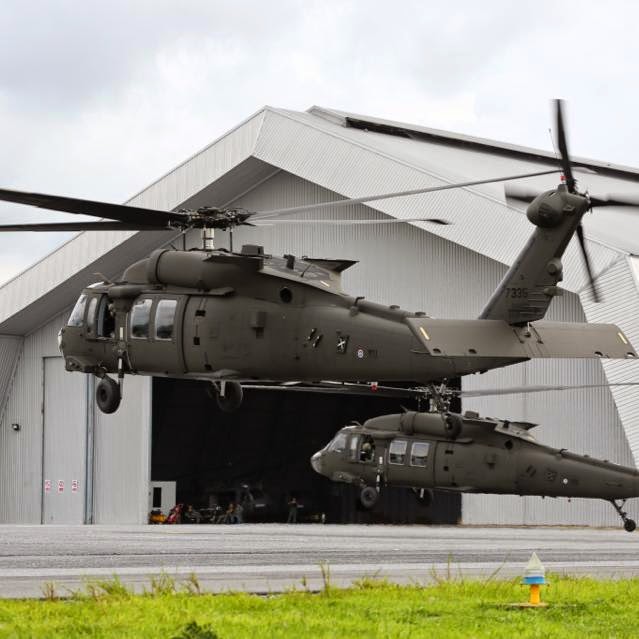Optimizing Security: Crucial Maintenance Tips for Your UH 60 Helicopter
Optimizing Security: Crucial Maintenance Tips for Your UH 60 Helicopter
Blog Article
Understanding the Mechanics and Design Behind Uh 60 Helicopters
The UH-60 helicopter, typically understood as the Black Hawk, stands as a peak of modern-day rotorcraft innovation, symbolizing a mix of durable design and elaborate technicians. As we peel back the layers of the UH-60's layout, a world of intricate systems and precise engineering comes to light.
History of UH-60 Helicopters
The background of UH-60 helicopters traces back to the late 1970s when the United States Military sought a functional and innovative utility helicopter to replace its aging fleet. In action to this requirement, the Sikorsky Aircraft Firm established the UH-60 Black Hawk helicopter. Presented in 1979, the UH-60 quickly ended up being a staple in army procedures as a result of its impressive capacities.
The UH-60 was developed to stand out in a variety of goals, including troop transport, medical emptying, digital warfare, and unique procedures. Its capability to adjust to various duties made it a useful property to the U.S. uh 60. Military and other army forces around the globe
For many years, the UH-60 platform has actually gone through several upgrades and variations to enhance its performance and equal evolving mission needs. These helicopters have seen comprehensive service in disputes such as the Gulf Battle, Afghanistan, and Iraq, showcasing their integrity and convenience in varied operational environments. The UH-60's abundant history is a testament to its enduring heritage as a premier utility helicopter.

Engine and Power Solutions
Utilizing advanced propulsion modern technology, UH-60 helicopters are outfitted with sophisticated engine and power systems to ensure optimum efficiency and reliability in a variety of operational situations. The UH-60, generally referred to as the Black Hawk, is powered by two General Electric T700-GE-701D engines, each efficient in supplying up to 1,940 shaft horsepower. These turboshaft engines provide the required thrust for the helicopter to perform its objectives successfully, consisting of army transport, medical emptying, and combat support.

Rotor System and The Rules Of Aerodynamics
Exactly how do the rotor system and aerodynamics of UH-60 helicopters contribute to their operational effectiveness and trip capacities? The blades system of the UH-60 helicopter plays an important function in providing lift and propulsion.
Aerodynamics also play a key role in the efficiency of UH-60 helicopters. The structured body and rotor blade layout reduce drag, permitting internet the helicopter to achieve higher rates and much better gas performance. The wind resistant design of the UH-60 also contributes to its capacity to run in varied ecological problems, consisting of hot temperatures and high altitudes.
Avionics and Flight Control Solution

In its complex coordination with the blades system and aerodynamics of UH-60 helicopters, the avionics and flight control systems develop a crucial network of technologies forming the airplane's operational abilities. Avionics include the electronic systems utilized for interaction, navigation, and monitoring numerous aircraft features. In the UH-60, these systems consist of digital display screens, interaction radios, general practitioner navigation, climate radar, and autopilot systems. These avionics systems supply important info to the pilots, enhancing situational understanding and ensuring efficient and risk-free operation of the helicopter.
The trip control systems of the UH-60 are in charge of you can check here converting the pilot's inputs right into the suitable modifications to the blades system, making certain stable flight and ability to move. These systems are composed of hydraulic actuators, servos, and computer systems that interact to control the primary and tail blades, as well as other flight control surfaces. By exactly handling the helicopter's trip characteristics, these systems make it possible for pilots to perform a wide range of objectives, from transportation and search-and-rescue to battle procedures, with accuracy and self-confidence.
Duty and Applications in Aeronautics
The role and applications of avionics and flight control systems in air travel are important to making certain the effective and risk-free procedure of aircraft, including UH-60 helicopters. Avionics systems in UH-60 helicopters include a range of electronic systems that help in navigating, interaction, surveillance, and regulating numerous airplane features. These systems consist of electronic screens, autopilot systems, communication radios, general practitioner navigation equipment, and weather radar. Flight control systems play a vital function in maneuvering the helicopter airborne, preserving stability, and guaranteeing precise activities. The fly-by-wire modern technology utilized in modern UH-60 helicopters converts pilot inputs right into electronic signals, which are after that translated by the flight control computer systems to change the aircraft's control surface areas. Furthermore, these systems incorporate safety and security functions such as autopilot settings, terrain recognition alerting systems, and stability enhancement systems to improve the overall safety and security and operational capabilities of the UH-60 helicopters in numerous objectives, including troop transportation, clinical emptying, search and rescue, and aerial firefighting.
Conclusion
In conclusion, the UH-60 helicopter is a versatile aircraft with an abundant background and progressed design. Its engine and power systems, blades system, the rules of aerodynamics, avionics, and trip control site systems all function with each other to make it a efficient and dependable device.
In its elaborate sychronisation with the rotor system and aerodynamics of UH-60 helicopters, the avionics and flight control systems form an important network of innovations forming the airplane's functional capacities.The trip control systems of the UH-60 are liable for converting the pilot's inputs right into the proper modifications to the rotor system, making sure steady flight and ability to move. Avionics systems in UH-60 helicopters incorporate an array of digital systems that aid in navigation, communication, monitoring, and regulating numerous airplane functions. Furthermore, these systems integrate security features such as auto-pilot modes, terrain awareness warning systems, and stability augmentation systems to boost the general security and operational capacities of the UH-60 helicopters in different goals, consisting of army transport, clinical emptying, search and rescue, and aerial firefighting.
Its engine and power systems, rotor system, aerodynamics, avionics, and trip control systems all work together to make it a reputable and efficient device.
Report this page